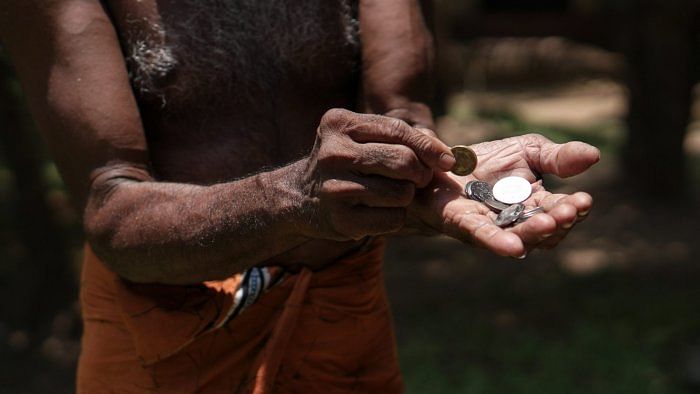
A recent report published by Oxfam on rising inequality in the world, and India in particular, presents the grim reality of the failure of the capitalistic economic system, which assists the industrialist class in amassing enormous wealth and is incapable of bridging the income gap between the rich and the poor.
The report finds that the richest 1per cent holds more than 45 per cent of global wealth, while the bottom half of the poor population has just 0.75 per cent. At the individual level, just 81 billionaires in the world hold more wealth than 50per cent of the population combined. One of the prime reasons for the rising wealth of the rich is a reduction in corporate tax. In rich countries, falling rates of tax on the rich have coincided with a rising share of income going to the top 1per cent of the population.
To lure the industrialist class for higher and sustained investment, countries cut down on the corporate tax to be levied, which invariably contributes to the accumulation of wealth and the widening income gap between the rich and the poor.
The report finds that the top 5 per cent own nearly 62 per cent of the total wealth and the top 1per cent own nearly 40.6 per cent of the total wealth in India. The concentration of wealth is also along the lines of caste stratification, as the report suggests. i.e., the caste considered to be at the top, the upper caste, has higher concentrations of wealth than those at the bottom of the caste system. It provides an advantage to the former in social and economic domains and incapacitates the latter at present and over the generations.
India, to help the industries and to lure foreign investments, slashed the corporate tax slabs from 30 per cent to 22 per cent, resulting in a total loss of Rs 1.84 lakh crore. In line with Oxfam’s report, recent research by Lucas Chancel and Thomas Piketty (2017) found that India’s average annual real per-adult income growth grew from 1.7per cent in 1951–1980 to 3.3 per cent in 1980–2015. The top 10per cent and top 1 per cent income groups accelerated up from 1.2 per cent to 5.1 per cent and 0.2 per cent to 6.6 per cent, respectively, while the lowest 50 per cent income group slowed down from 2.2 per cent to 1.9 per cent.
The debilitating impacts of wealth inequality are manifold. It has stripped 70 per cent of Indians of such a basic necessity as a healthy, consumable diet, leading to the yearly deaths of 1.7 million owing to diseases resulting from a poor diet. Estimates show that 60per cent of Indians live on less than Rs 262.4 per day.
A study showed that the life expectancy at birth was 65.1 years for the poorest fifth of households in India, compared to 72.7 years for the richest fifth of households. Even caste and life expectancy are intricately connected. The average Dalit woman dies 14.6 years earlier than a woman from a higher caste. The life expectancy of the tribals in India is also approximately three years less than that of the non-tribal population.
The unequal socioeconomic structure of the country and the influence of the socioeconomically favoured groups on the formulation and execution of economic policies may be to blame for the growth in inequality, perhaps more importantly because it can hurt health, access to education, and increase poverty.
Additionally, the skewed distribution of employment is one of the reasons for the rising inequalities in the Indian economy. These facts are amply supported by the employment data from the PLFS for 2018–19. Compared to the national average of 5.8per cent, SC employees had a higher unemployment rate (6.4per cent) in 2018–19. (5.9per cent for high castes, 5.8per cent for OBCs, and 4.3per cent for STs).
However, in reality, as Prabhat Patnaik paraphrased Karl Marx, “capitalism’s spontaneous tendency is to produce wealth at one pole and poverty at another.” Therefore, the sheer production of wealth is not a panacea for overcoming poverty. It is simply the other side of the accentuation of poverty.
Many believe that progressive taxation of the superrich (the top 1per cent wealthiest) is the way to manage the rising inequality in the country by diverting this fund for the improvement of several indicators such as health, education, housing, sanitation, etc. This recommendation, however, is a double-edged sword tied with the fear of capital fleeing the countries, putting them in a “race to the bottom,” i.e., lowering tariffs; on the other end, countries cannot simply afford to let income inequality run rampant. This is the reason the prophetic words of Jean-Jacques Rousseau are reverberating in Davos, 2023, “When the people have run out of food, they will eat the rich.”
(Prashant Kumar Choudhary is an assistant professor in the department of public policy at the Manipal Academy of Higher Education, Bengaluru, and Jadhav Chakradhar is an assistant professor at the Centre for Economic and Social Studies, Hyderabad.)